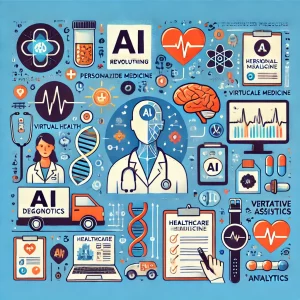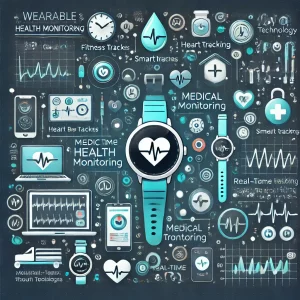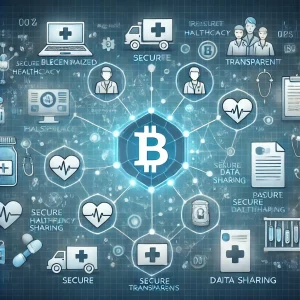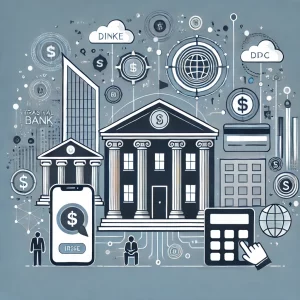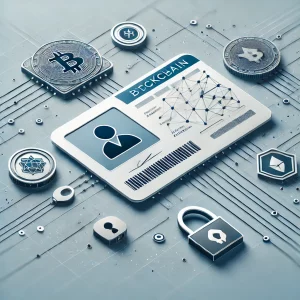How 5G is Enabling Telemedicine and Remote Healthcare
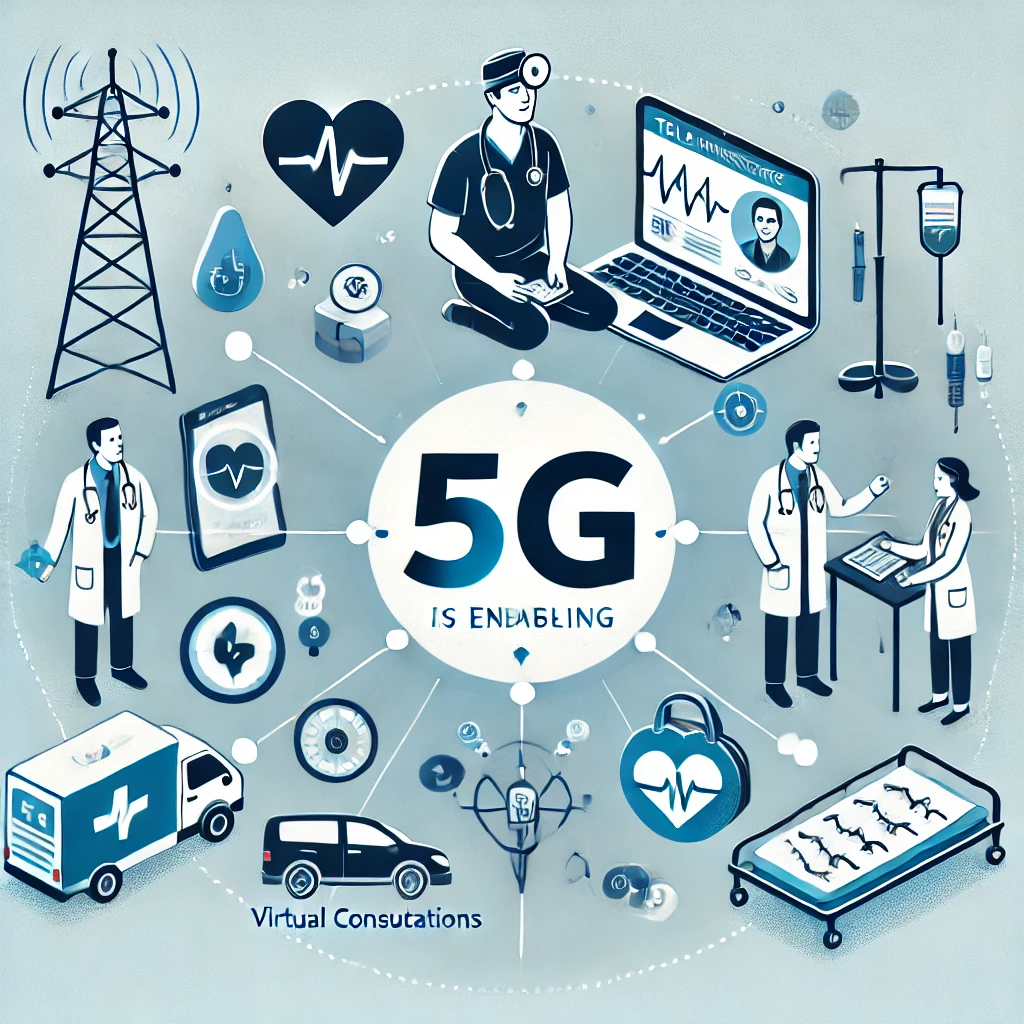
The advent of 5G technology is transforming industries worldwide, and healthcare is no exception. One of the most significant ways 5G is impacting healthcare is by enabling the rapid expansion of telemedicine and remote healthcare services. By providing ultra-fast internet speeds, low latency, and reliable connectivity, 5G is enhancing the quality and accessibility of remote healthcare, making it possible for patients to receive medical care from anywhere in the world.
This article explores how 5G is enabling telemedicine and remote healthcare, the key benefits it provides, and the challenges that come with implementing this technology.
The Basics of 5G Technology
5G, or fifth-generation wireless technology, is the latest advancement in mobile networks, offering faster data transfer speeds, reduced latency, and improved capacity compared to previous generations like 4G LTE. With speeds up to 100 times faster than 4G, 5G provides near-instantaneous data transmission, which is critical for applications that require real-time processing, such as telemedicine.
In healthcare, 5G’s high bandwidth and low latency create new possibilities for remote monitoring, virtual consultations, and advanced medical procedures that rely on real-time communication and data sharing.
How 5G is Transforming Telemedicine and Remote Healthcare
1. Improved Virtual Consultations
Telemedicine, the practice of delivering medical care remotely through video consultations and online platforms, has seen rapid growth in recent years, especially during the COVID-19 pandemic. While telemedicine has been possible with 4G networks, 5G dramatically improves the quality and reliability of virtual consultations.
With 5G, patients and healthcare providers can experience high-definition video and crystal-clear audio with minimal delays, making virtual visits feel more like in-person consultations. The low latency of 5G ensures that there is no noticeable lag during conversations, which is essential for effective communication between doctors and patients. This real-time interaction can improve diagnostic accuracy and patient satisfaction, making remote care a more viable option for ongoing treatment and follow-ups.
In addition, 5G allows healthcare providers to quickly share large files, such as high-resolution medical images, during consultations. This enables doctors to review X-rays, MRIs, or other diagnostic scans in real time, improving the quality of remote diagnoses.
2. Remote Patient Monitoring
Remote patient monitoring (RPM) allows healthcare providers to track patients’ health metrics in real time, even when they are not in a healthcare facility. This is especially important for managing chronic conditions like diabetes, heart disease, and hypertension. Wearable devices, sensors, and mobile apps can collect data on a patient’s vital signs, such as heart rate, blood pressure, oxygen levels, and glucose levels, and send that data to healthcare providers for analysis.
With 5G, RPM becomes more effective because of the increased bandwidth and real-time data transmission. 5G enables healthcare providers to receive continuous streams of data from multiple patients simultaneously, ensuring that any concerning changes in a patient’s health are detected immediately. For instance, if a patient’s heart rate suddenly spikes or their glucose levels drop, the healthcare provider can be alerted instantly and take appropriate action, such as adjusting medication or scheduling an emergency consultation.
This real-time monitoring capability helps prevent hospital readmissions, reduces the need for in-person visits, and allows patients to receive timely care from the comfort of their homes.
3. Telerobotics and Remote Surgery
One of the most exciting applications of 5G in healthcare is the potential for remote surgery through telerobotics. Telerobotics allows surgeons to perform complex procedures on patients in different locations using robotic arms and advanced surgical equipment. The surgeon controls the robotic instruments from a remote location, relying on high-speed internet to transmit real-time video, tactile feedback, and precise instructions.
While remote surgery is already possible with current technology, 5G makes it safer and more reliable by eliminating the latency issues that could cause delays or errors during surgery. With near-zero latency, 5G ensures that the surgeon’s actions are executed instantly by the robotic instruments, providing the precision needed for delicate procedures.
This technology can revolutionize healthcare by allowing highly specialized surgeons to treat patients in remote or underserved areas without having to travel. For example, a surgeon in a major medical center could perform a life-saving operation on a patient located in a rural area where such expertise is not readily available.
4. Enhanced Diagnostics with AI and 5G
Artificial intelligence (AI) plays a crucial role in healthcare diagnostics, helping physicians analyze medical images, detect patterns in patient data, and provide personalized treatment recommendations. The combination of 5G and AI can significantly enhance the accuracy and speed of diagnostics.
With 5G’s fast data transmission, AI algorithms can process large amounts of patient data and provide real-time insights to healthcare providers. For example, an AI-powered system could analyze a patient’s CT scan and detect early signs of cancer, all within seconds, allowing doctors to diagnose and treat the disease at an earlier stage.
In rural or remote areas, where access to specialists may be limited, 5G-enabled AI systems can provide real-time diagnostic support, ensuring that patients receive accurate and timely care, even from a distance.
5. Telemedicine in Rural and Underserved Areas
One of the biggest challenges in healthcare is providing access to quality medical care in rural and underserved areas. Many people in these regions lack access to specialized medical services, leading to delays in treatment and poorer health outcomes. 5G has the potential to bridge this gap by enabling telemedicine services in areas with limited infrastructure.
With 5G’s ability to provide high-speed, low-latency internet connectivity, healthcare providers can deliver telemedicine services to patients in rural areas with the same quality of care as those in urban settings. This allows patients to consult with specialists, receive follow-up care, and manage chronic conditions without having to travel long distances to a healthcare facility.
In addition, 5G can support mobile health clinics equipped with telemedicine tools that bring healthcare services directly to rural communities. These clinics can use 5G connectivity to transmit patient data, consult with remote specialists, and deliver personalized care in real time.
6. Mental Health and Teletherapy
Mental health services, such as counseling and therapy, are increasingly being delivered through teletherapy platforms. The rise of teletherapy has made mental health support more accessible to individuals who may be unable or unwilling to attend in-person sessions.
With 5G, the quality of teletherapy sessions is enhanced, providing smooth, uninterrupted video and audio communication between patients and therapists. This reliable connectivity is critical for building trust and rapport during therapy sessions, where effective communication is key to successful outcomes.
5G also enables more interactive mental health services, such as virtual reality (VR) therapy, which immerses patients in controlled environments to help them manage conditions like anxiety, PTSD, and phobias. The high bandwidth and low latency of 5G make these immersive therapies possible, allowing for real-time interactions between patients and therapists in virtual spaces.
Benefits of 5G in Telemedicine and Remote Healthcare
The integration of 5G into telemedicine and remote healthcare offers numerous benefits, including:
1. Faster Data Transmission
The high-speed capabilities of 5G allow for near-instantaneous transmission of large medical files, such as MRI scans, X-rays, and other diagnostic images. This enables healthcare providers to access critical information more quickly, leading to faster diagnoses and treatment plans.
2. Reduced Latency
The low latency of 5G ensures that real-time interactions between patients and healthcare providers are seamless. This is especially important for virtual consultations, remote surgeries, and real-time monitoring, where delays could have serious consequences for patient care.
3. Increased Access to Healthcare
By improving connectivity in rural and underserved areas, 5G expands access to telemedicine services. Patients who previously had limited access to healthcare can now consult with specialists, receive diagnoses, and manage their conditions remotely.
4. Improved Patient Outcomes
With 5G, healthcare providers can deliver more timely and personalized care, resulting in better patient outcomes. Real-time monitoring, faster diagnoses, and access to specialized care all contribute to improved health outcomes for patients.
5. Cost Savings
Telemedicine and remote healthcare services enabled by 5G can reduce healthcare costs by minimizing the need for in-person visits, hospital readmissions, and emergency room visits. Remote care allows patients to manage chronic conditions more effectively, reducing the financial burden on healthcare systems.
Challenges of Implementing 5G in Healthcare
While the potential of 5G in healthcare is immense, there are challenges that need to be addressed:
1. Infrastructure Development
Implementing 5G networks requires significant infrastructure development, particularly in rural and remote areas. Ensuring that 5G connectivity is available in these regions is critical to expanding telemedicine services.
2. Data Privacy and Security
With the increased use of telemedicine and real-time data sharing, healthcare organizations must ensure that patient data is secure. 5G networks need robust cybersecurity measures to protect sensitive medical information from cyberattacks and data breaches.
3. Cost and Accessibility
While 5G offers cost-saving benefits in the long term, the initial investment in 5G-enabled healthcare infrastructure and devices can be expensive. Ensuring that these services are affordable and accessible to all patients is a key consideration for healthcare providers.
Conclusion
5G is revolutionizing telemedicine and remote healthcare by providing faster, more reliable connectivity that enables real-time communication, advanced diagnostics, and remote surgeries. By expanding access to healthcare services in rural and underserved areas, 5G is helping to close the gap in healthcare inequality and improve patient outcomes. As 5G networks continue to develop, the future of telemedicine and remote healthcare looks promising, with the potential to transform how healthcare is
